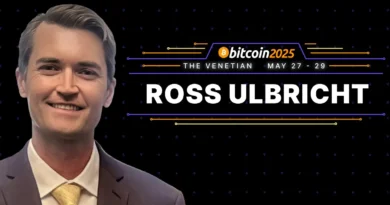The Evolving Regulatory Landscape for Web3
Key Takeaways:
- Data is up until October 2023 The Asia Web3 Alliance urges US-Japan alliance in overcoming regulatory barriers for the Web3 sector
- Japan has explicit rules on the books for crypto, but they are quite strict, whereas the US is stuck in legal limbo due to ongoing skirmishes between the SEC and the CFTC (among others).
- Notably, the proposed collaboration calls for legal agility, regulatory uniformity, investment incentives and stablecoin standardization to advance innovation.
- Both the US and Japan have an opportunity to lead in blockchain technology by harmonizing their regulatory approaches — or at least reducing risks — and enabling a stronger measure of confidence in the market.
Japan has become one of the more orderly crypto trading environments, with an established licensing regime for exchanges and stablecoin rule sets. Meanwhile, in the United States, regulatory stagnation has set in as agencies like the Securities and Exchange Commission (SEC) and the Commodity Futures Trading Commission (CFTC) remain locked in a tug-of-war over jurisdiction over the oversight of digital assets.

Asia Web3 Alliance’s Proposal for US-Japan Web3 Collaboration
Japan as a Key Player for Global Web3 Regulation
Japan’s regulatory stance toward Web3 is distinguished by its combination of a proactive regulatory framework and the continued dominance of strict government control. The country was one of the first to:
- Register and supervise crypto exchanges via its Financial Services Agency (FSA).
- Set stablecoin standards, mandate the registration of issuers as financial entities.
- Adopt investor safeguards, including mandatory asset segregation for exchanges.
These measures foster a safe, thoroughly regulated environment for blockchain businesses. Japan’s regulatory rigidity has however held back the growth of its local crypto ecosystem as well. Restrictions around asset custody and high compliance costs are behind the challenges for both startups and decentralized finance (DeFi) projects.
With both jurisdictions able to stop trying to outdo each other’s innovation disadvantage, the path toward increasing the regulatory opportunity for Web3 entrepreneurs in either region is to work collaboratively to shape legal and regulatory structures that balance security with innovation.
The Regulatory Struggles of the United States
But the United States offers a much different regulatory landscape. Despite being home to some of the biggest blockchain companies and investment firms, the country has no cohesive regulatory framework, which has resulted in:
- Unclear classification of digital assets where some tokens are considered securities and others are not.
- Regulatory fragmentation, where the SEC and CFTC regularly spar over which agency should oversee crypto assets.
- Strict enforcement actions, major exchanges (Coinbase, Binance) suing despite attempts to comply.
For the US to continue being a leader in blockchain innovation, it needs to create a more coherent regulatory environment and work alongside other developed regulatory areas — something that could be achieved through stronger relations with Japan.
A Unified Front: The Vision Behind Asia Web3 Alliance
Asia Web3 Alliance has made some important recommendations for creating a more predictable and business-friendly regulatory environment:
- Create a Flexible Legal System – To foster innovation while ensuring security, regulations must not be too restrictive.
- Deepen Cross-Border Regulatory Cooperation: Where appropriate, align approaches in the U.S. and Japan to minimize conflicting rules and create a more seamless operational environment.
- Promote investments into web3 startups — both countries can lead the way towards a vibrant digital asset economy by incentivising blockchain builders.
- Standardize Stablecoin and Digital Asset Policies – A harmonized regulatory framework for stablecoins and crypto assets would strengthen market integrity and investor confidence.
- Successful implementation could lead to reduced compliance risk for Web3 companies, increased transparency in the market and greater institutional adoption.
What This Means for the Future of Web 3
Japan and the United States working together to establish regulations has the potential to become a global model for governing Web3. The places where the right regulations and the support structures are in place are thriving, and more countries will adopt this way of life. These advancements could provide an opportunity for significant innovation and allow Web3 projects to grow globally without being stifled by disparate regulatory frameworks.
More News: Fragmetric Secures Strategic Funding to Drive Solana’s Restaking Revolution
The post The Evolving Regulatory Landscape for Web3 appeared first on CryptoNinjas.
CryptoNinjas




















